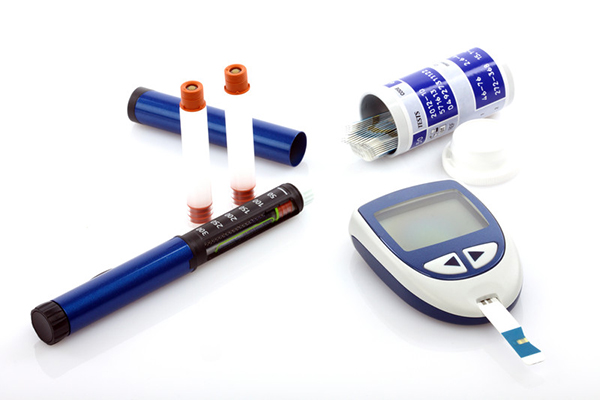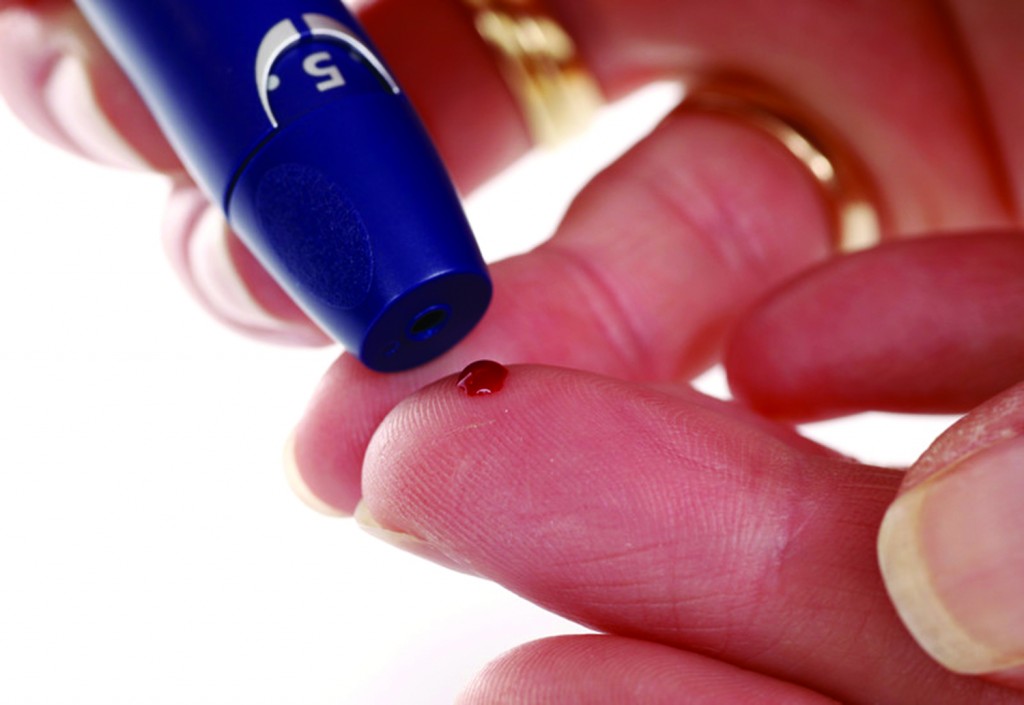The above picture depicts diabetes equipment, insulin pen and glucose level blood test. Photo credit: © Can Stock Photo Inc. / AlexKosev.
By Allan Bucka Jones
PRIDE Health Columnist
 Diabetes is running like a raging fire inside the black community. The epidemic level of the disease is not limited to our community.
Diabetes is running like a raging fire inside the black community. The epidemic level of the disease is not limited to our community.
Despite the awareness and educational efforts of many organizations, the disease is on the rise. The disease is also very costly to treat, for both individuals and governments.
The Canadian Diabetes Association says there are over 9 million people in Canada living with diabetes or pre-diabetes. Of the 3 million with diabetes, 90 percent are diagnosed with Type 2 diabetes, and despite the many treatment options available, approximately 50 percent do not reach the level of glucose (sugar) recommended by their doctor.
So we have a problem, especially when you consider the devastating effects of diabetes on the body, from head to toe.
To help the 50 percent of the Canadian population with Type 2 diabetes, which have problems reaching the sugar (glucose) level recommended by their doctor, pharmaceutical companies have done their research and come up with new approaches to diabetes treatment.
Not long ago, a new class of products, called SGLT2 inhibitors (sodium glucose co-transporter 2 inhibitors) was approved by Health Canada. The SGLT2 inhibitors, one of which is INVOKANA™, treat diabetes by increasing the loss of sugar (glucose) in the urine. In clinical trials INVOKANA™ had success by improving sugar control, while reducing systolic blood pressure and reducing body weight.
Many people become diabetic as a consequence of high blood pressure and / or carrying too much body weight. You can see the significant advantage of a product like INVOKANA™, that reduces blood sugar level and at the same time minimize two significant risk factors, namely high blood pressure and being overweight.
If you have problems controlling your blood sugar after lifestyle changes and taking medications, you may want to ask your doctor about the option of trying the SGLT2 inhibitors.
The other piece of good news is that INVOKANA™ was recently added to the Ontario Drug Benefit (ODB) Formulary. The product is available free or at a significantly reduced cost for those who qualify.
You are eligible for ODB program benefits if you live in Ontario, and you have a valid Ontario health card and at least one of these statements applies to you:
* If you are 65 years of age or older.
* If you live in a Long-Term Care Home or a Home for Special Care.
* If you are enrolled in the Home Care program.
* If you receive social assistance through Ontario Works or the Ontario Disability Support Program.
To qualify, for a total or partial reimbursement, of the cost of the prescribed product, it must be prescribed by an Ontario doctor or other authorized prescriber, and you must buy them from an accredited Ontario pharmacy.
The ODB program also covers a number of diabetic testing agents. People with diabetes use these products to test sugar levels in their blood. You are eligible to receive free test strips, if you qualify for coverage under the ODB program; have diabetes; or if an Ontario doctor prescribes an ODB-approved diabetic testing agent for you to use.
If you qualify, there are other Ontario programs that may help you with the costs of diabetic supplies. These supplies include needles and syringes. To learn more, contact the Assistive Devices Program at 1-800-268-6021.
Many individuals, for one reason or another, do not qualify for the Ontario Drug Benefit (ODB) Formulary. They are usually younger than 65 years old and still employed and receive drug benefits from their employer.
Many people do not realize that their drug plan is chosen by the employer and administered by an insurance company. There are a broad range of different types of drug plans and coverage features that an employer can choose to offer their employees. Employers decide on what type of drug plan to offer employees based on affordability, the needs of the employees and drug plans offered by other employers.
To find out if your diabetes drug is covered, contact your insurance company. Ensure you have your drug plan contract or policy number and personal certificate or identification number.
These can be found on the benefits wallet or pay direct drug card provided by your employer; Get a copy of the benefits booklet that outlines the employer benefit plan.
This is often provided when the employee starts a new job or gets new benefits; Make sure you have the drug name and ideally the DIN (Drug Identification Number); Get the phone number for the insurance company.
This may be on the benefits wallet or pay direct drug card or look up their phone number; Contact the insurance company to see if the drug is covered.
If your diabetes drug is not covered, more research is required. Contact your insurance company and get more information on why the drug is not covered. In order to appeal the decision to decline the drug, you have to know why it was made.
Although the insurance company may have already said the drug is not covered by the plan, your call is to find out why it is not covered. Persistence may be required to get the information needed.
There are a number of reasons why a drug may not be covered by a private plan. A common reason given for new products, is that it is a new drug, still under review by the insurance company, and a final coverage decision has not yet been made. Ask when a decision will be made.
When the insurance carrier says a drug is not covered, it can also be that the insurance plan chosen by the employer does not cover this drug. The insurance carrier is simply following the terms of the insurance contract chosen by the employer.
Because the employer chose the plan, they may have the opportunity to ask the insurer to pay for a drug that is not covered by the drug plan. This is called an “exception” or “extra-contractual coverage”.
Any exceptions have to be agreed upon by both the insurer and the employer, and there is the potential that this could affect the price of the whole insurance plan.
Talk to your family doctor or your diabetes educator or pharmacist about the newer diabetes medications available. You may be eligible to receive one or more of these products, with new mode of actions. They could possibly control your blood sugar level more effectively than the product or products you currently use.
Always play an active role in your diabetes care.
Allan Bucka Jones is a Health Promoter and Broadcaster. You can contact Allan Bucka Jones at allan@jonesandjones.ca.
 Pride News Canada's Leader In African Canadian & Caribbean News, Views & Lifestyle
Pride News Canada's Leader In African Canadian & Caribbean News, Views & Lifestyle






